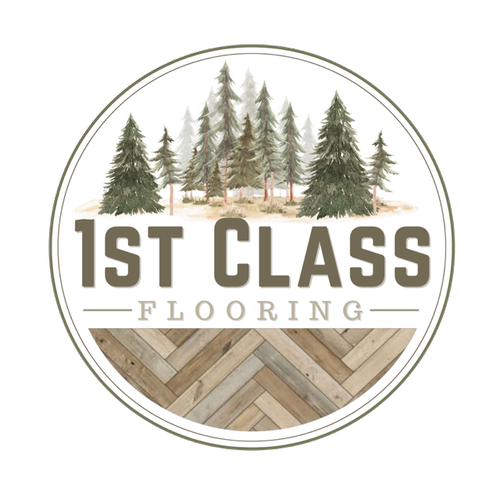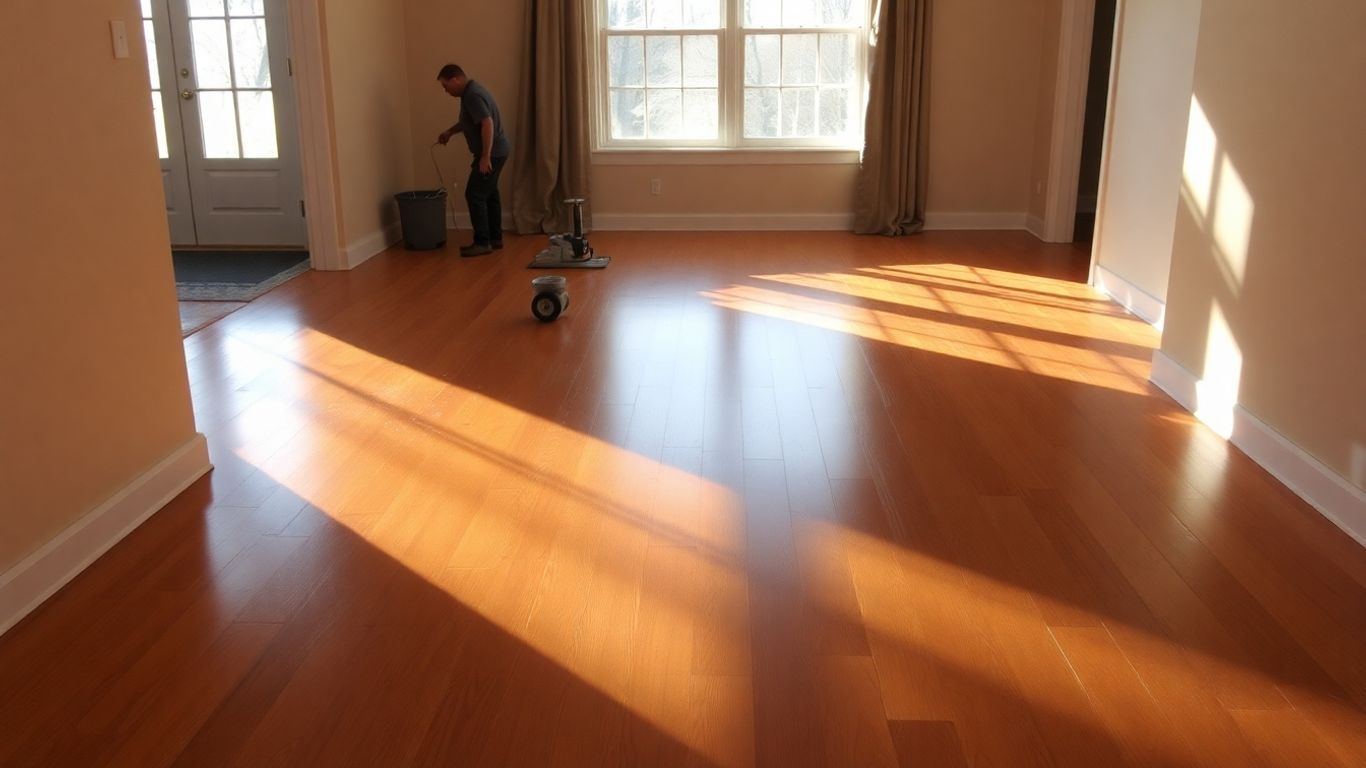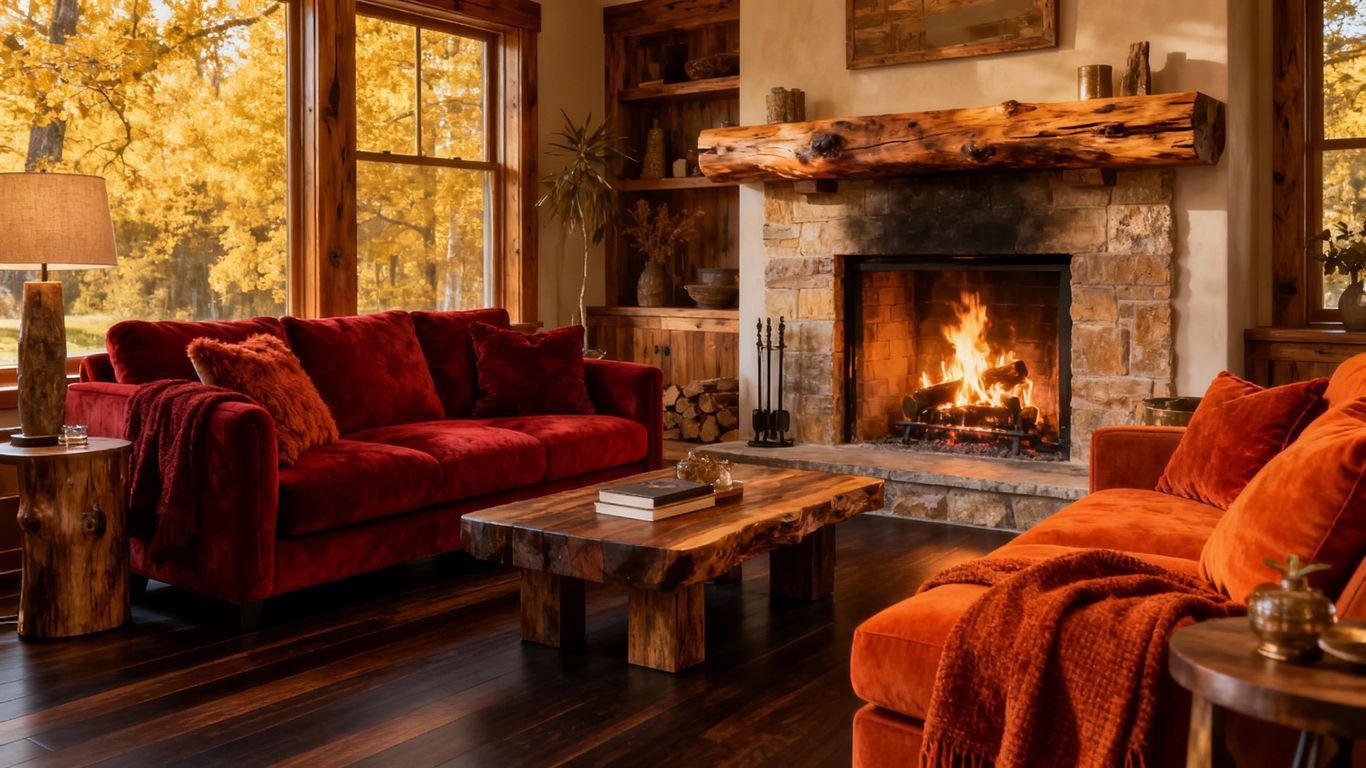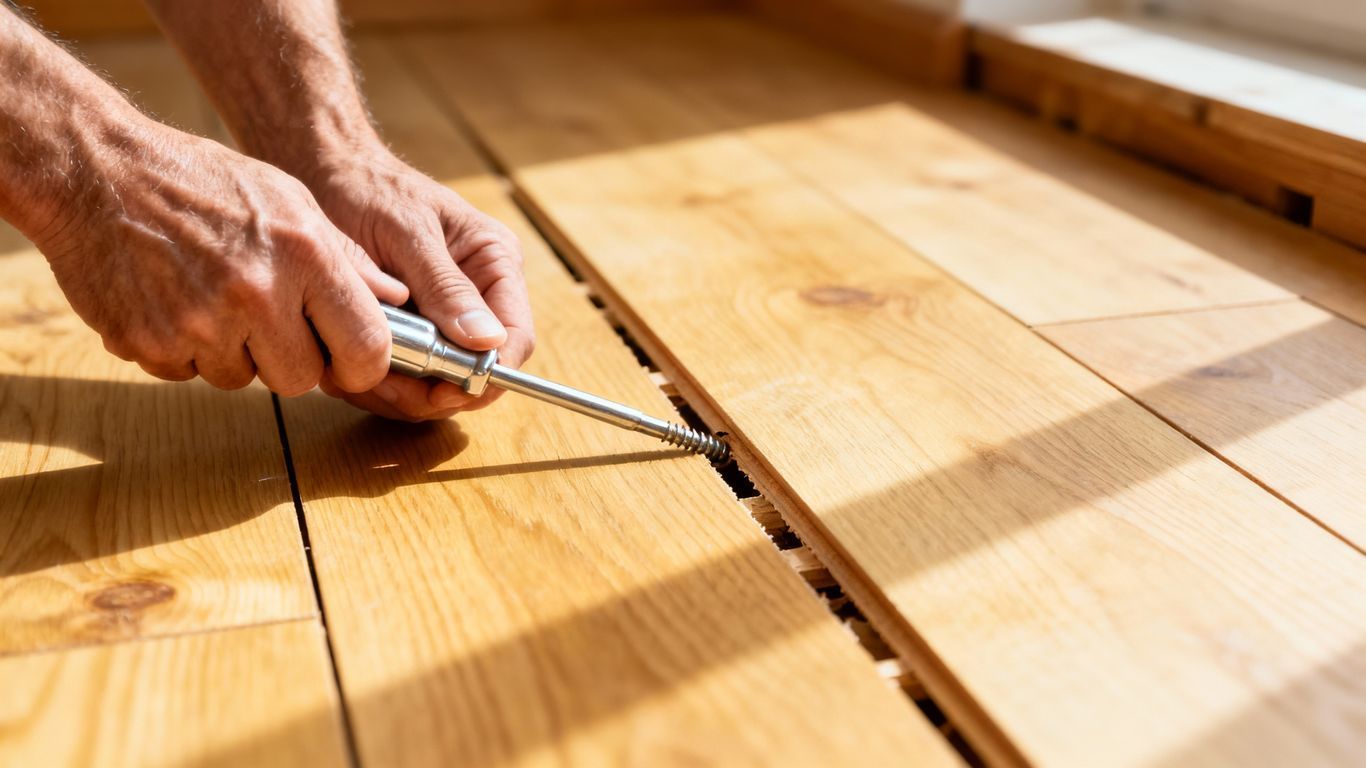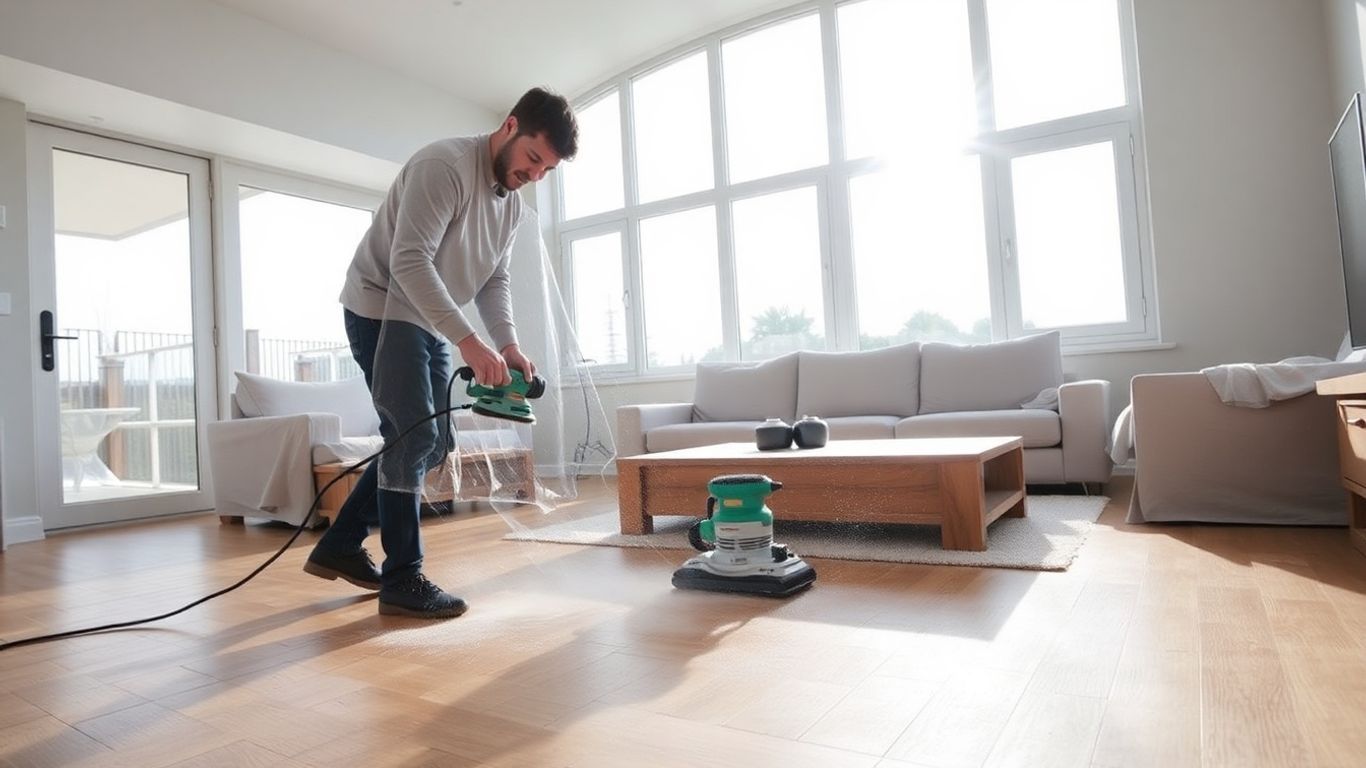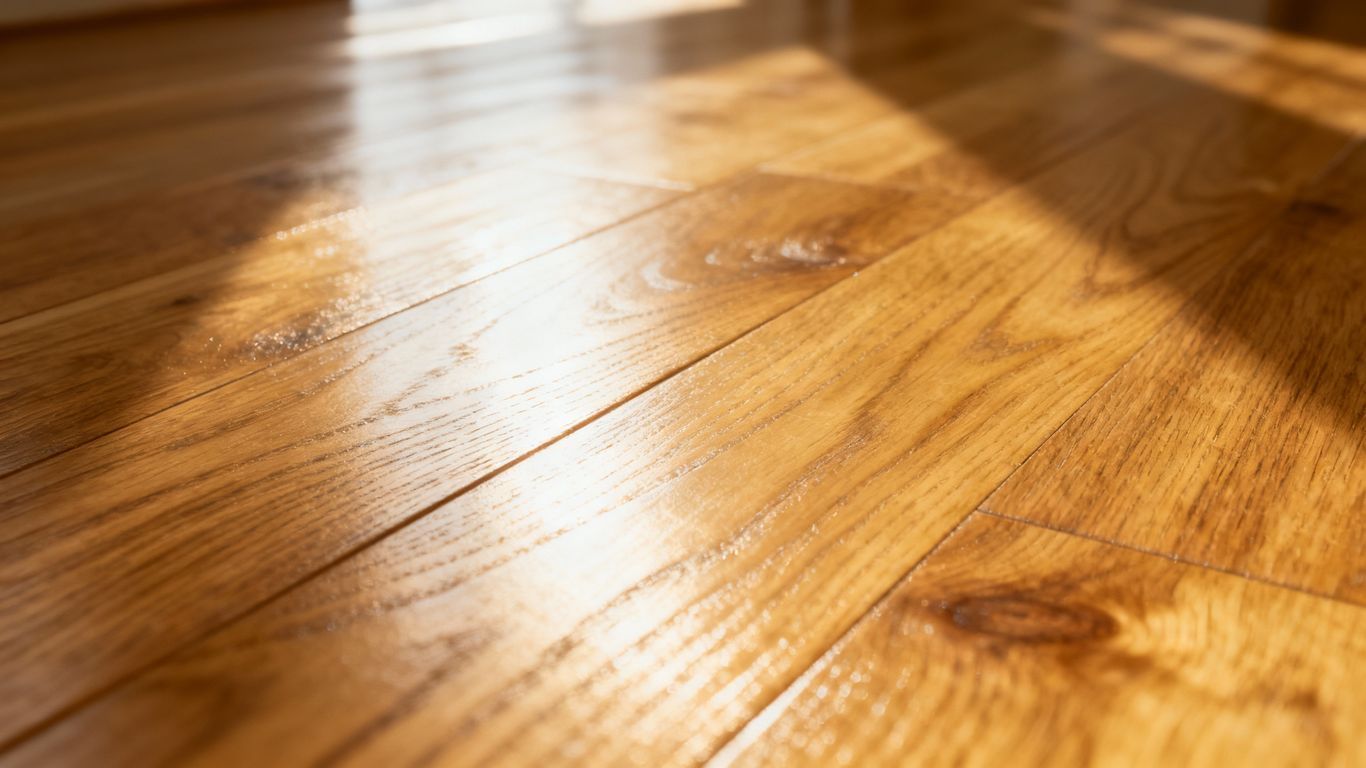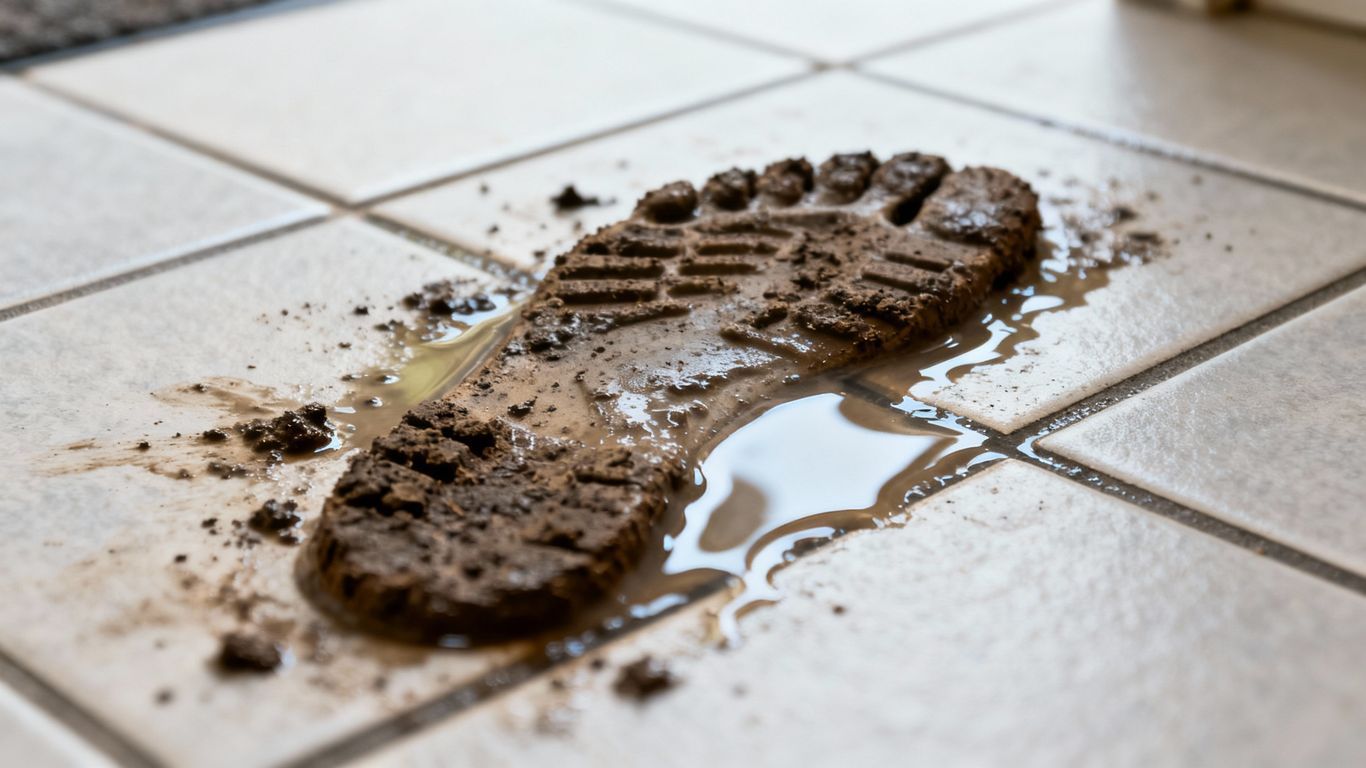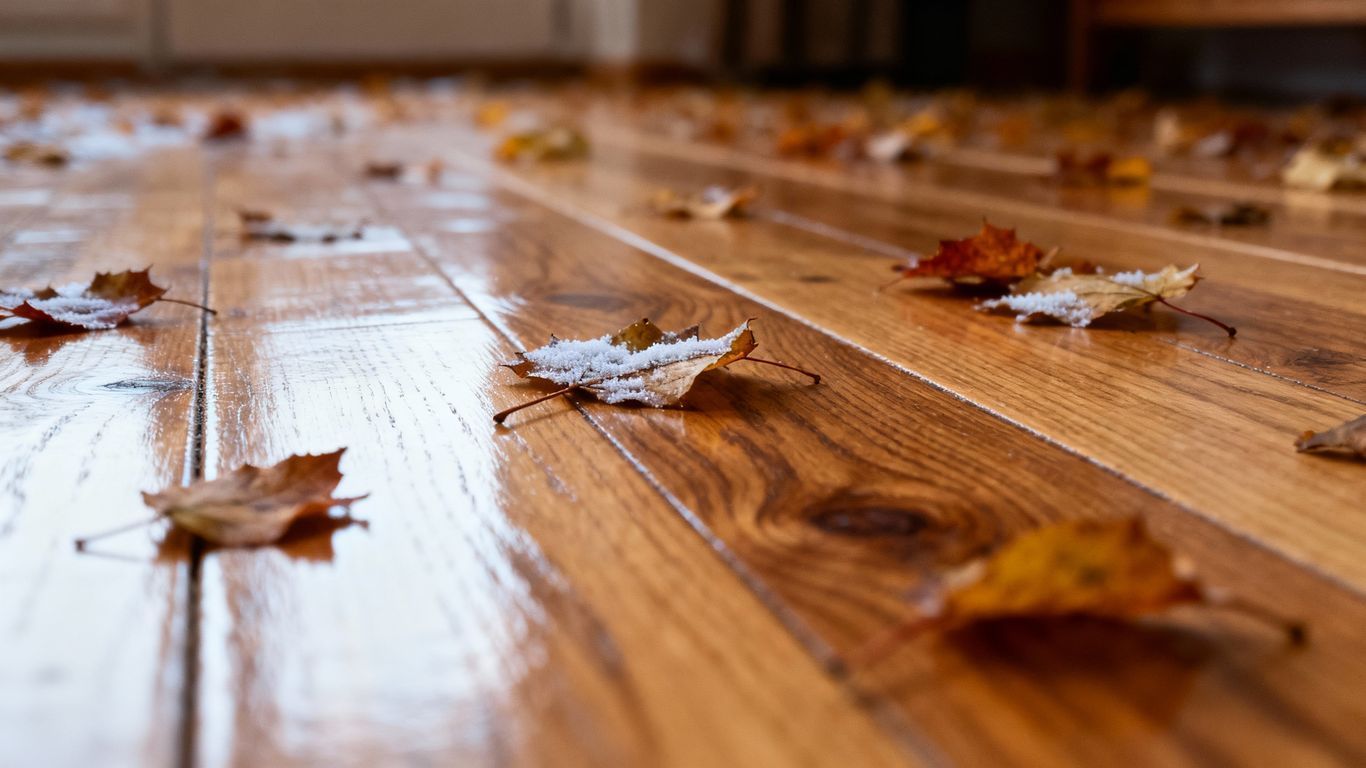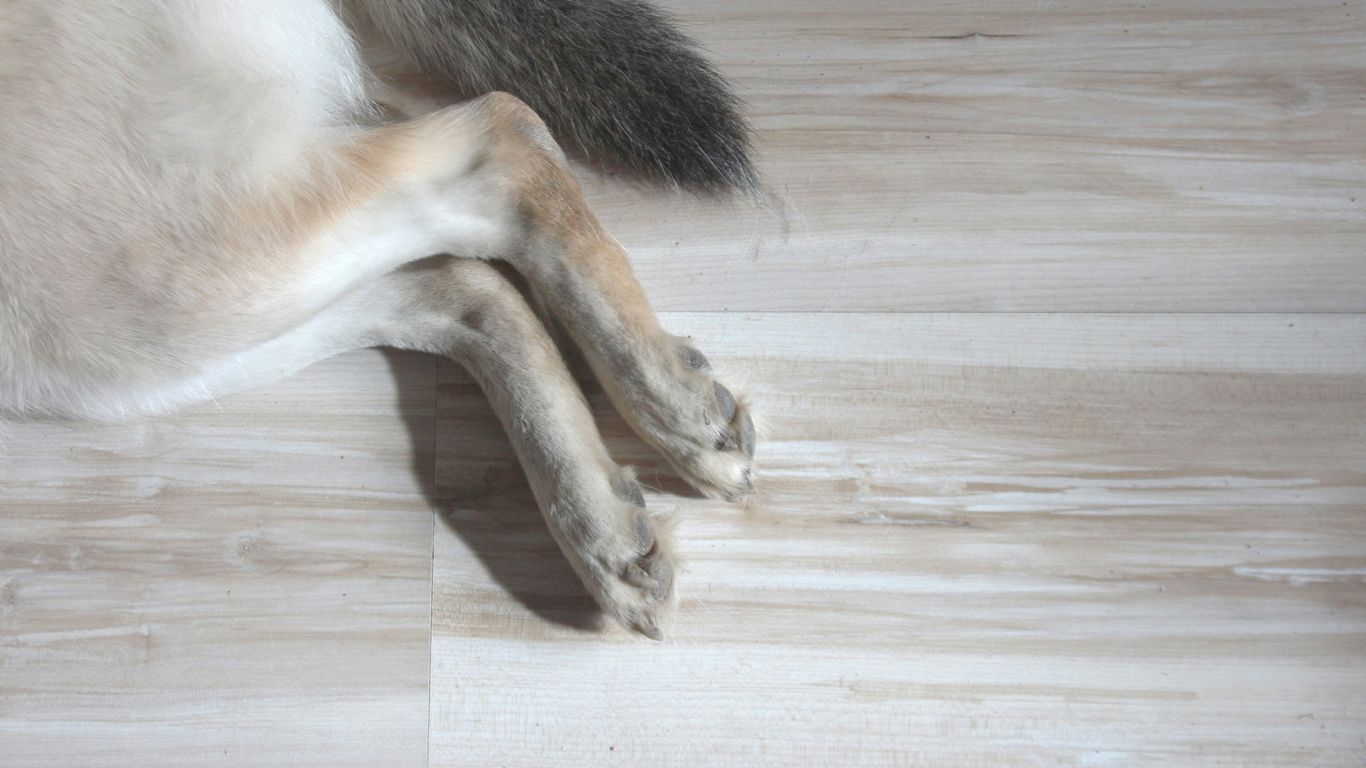Eco-Friendly Flooring Choices in Chickamauga, Trenton & Rossville, GA
Thinking about new floors for your place in Chickamauga, Trenton, or Rossville? It's a big decision, and choosing the right materials can make a real difference, not just for your home's look but for the planet too. We're going to explore some great eco-friendly flooring Chickamauga GA options that are good for the environment and can make your home feel even better. Let's get started on finding some sustainable choices that work for you.
Key Takeaways
- Bamboo flooring offers a durable and attractive option, but make sure it's sourced responsibly.
- Using recycled materials like glass or reclaimed wood can add unique character and reduce waste.
- Natural linoleum is a healthy and eco-friendly choice that's been around for a long time.
- Cork floors are a renewable resource that feels good underfoot and helps with noise.
- Opting for low-VOC finishes and supporting local manufacturers helps create healthier homes and a smaller environmental impact.
Sustainable Bamboo Flooring Options
When you're thinking about eco-friendly flooring, bamboo often pops up, and for good reason. It's a really popular choice for homeowners in Chickamauga, Trenton, and Rossville who want something that looks good and is better for the planet. Bamboo is technically a grass, not a wood, and it grows incredibly fast. This rapid growth cycle makes it a highly renewable resource compared to traditional hardwoods. Plus, it can give your home a warm, natural feel that's hard to beat.
Durability and Aesthetics of Bamboo
Bamboo flooring is known for being tough. It can stand up to a lot of foot traffic, which is great if you have kids or pets running around. The look of bamboo can vary depending on how it's processed. You can find it in natural light shades or darker, richer tones. Some styles even have a unique grain pattern, like strand-woven bamboo, which is exceptionally dense and durable. It really adds a touch of elegance to any room.
Installation and Maintenance Tips
Installing bamboo flooring is pretty similar to installing hardwood. You can often float it, nail it, or glue it down, depending on the type you choose and your subfloor. Just make sure your subfloor is clean and level before you start. For maintenance, it's pretty straightforward. Regular sweeping or vacuuming will keep dust and grit from scratching the surface. For spills, wipe them up quickly with a damp cloth. Avoid using too much water, as this can damage the bamboo. A good quality floor cleaner designed for wood or bamboo is usually best. It's a good idea to put felt pads on furniture legs to prevent scratches, just like you would with any hard flooring.
Sourcing Eco-Conscious Bamboo
Not all bamboo flooring is created equal when it comes to environmental impact. It's important to look for bamboo that's harvested responsibly. This means checking if the bamboo is grown without harmful pesticides or excessive water. Also, consider the manufacturing process. Are the adhesives and finishes used low in VOCs (Volatile Organic Compounds)? Looking for certifications can help. For instance, the Forest Stewardship Council (FSC) certification means the bamboo comes from responsibly managed forests. Finding these details helps ensure you're making a truly green choice for your home. You can find some great green upgrade ideas, including renewable flooring options like bamboo, to make your house more environmentally conscious right here.
Choosing bamboo means you're opting for a material that regenerates quickly, often in just a few years, unlike trees that can take decades to mature. This makes it a smart choice for reducing deforestation and supporting sustainable land use practices.
Recycled Materials for Greener Homes
Thinking about giving your home a makeover? You might want to consider materials that have already lived a life. It’s a smart way to cut down on waste and bring some unique character into your living space. Plus, it feels good knowing you're making a more responsible choice for the planet.
Recycled Glass Countertops and Backsplashes
Forget boring old granite for a second. Recycled glass surfaces are pretty neat. They take glass that would otherwise end up in a landfill – think old bottles, windows, even mirrors – and turn it into something beautiful for your kitchen or bathroom. The glass pieces are often mixed with cement or resin, creating a look that can range from subtle flecks to bold, colorful patterns. It’s a fantastic way to add a pop of personality and sparkle.
- Durability: These surfaces are tough, resisting scratches and stains pretty well. They’re also heat-resistant, which is always a plus in a kitchen.
- Aesthetics: You get a lot of design flexibility. From muted tones to vibrant mixes, there’s likely a style that fits your home.
- Maintenance: Cleaning is usually straightforward – a bit of soap and water does the trick.
Using recycled glass means you're diverting waste from landfills and reducing the need to mine new raw materials. It's a win-win for your home and the environment.
Reclaimed Wood for Rustic Charm
If you love that cozy, lived-in look, reclaimed wood is your best friend. This is wood that's been salvaged from old barns, factories, or even old houses. It often comes with its own history – nail holes, saw marks, and a weathered patina that you just can't fake. It’s perfect for accent walls, flooring, or even custom furniture.
- Unique Character: Every piece of reclaimed wood tells a story. No two projects will ever look exactly the same.
- Environmental Benefit: By reusing wood, we save trees and reduce the energy needed to process new lumber.
- Versatility: It can be used for flooring, wall paneling, beams, and more, adding warmth and texture.
Recycled Rubber Flooring Benefits
This might sound a bit unusual, but recycled rubber flooring is actually a really practical option, especially for areas like gyms, playrooms, or garages. It’s typically made from old tires. It’s surprisingly comfortable underfoot and offers great traction.
- Shock Absorption: Great for reducing impact, whether you’re working out or kids are playing.
- Sound Dampening: It helps quiet things down, which is nice if you have noisy upstairs neighbors or a home gym.
- Water Resistance: It doesn't soak up spills easily, making it easy to clean.
When you choose recycled rubber, you're giving old tires a new purpose and keeping them out of landfills where they can cause environmental problems.
Natural Linoleum: A Timeless Choice
The Composition of Natural Linoleum
So, what exactly is natural linoleum? It’s not like the vinyl stuff you might be thinking of. Real linoleum is made from a mix of natural, renewable ingredients. Think linseed oil (that’s the key!), pine resin, cork dust, wood flour, and ground limestone. These get mixed together and then oxidized, which gives it that characteristic look and feel. It’s a truly biodegradable product, which is pretty neat when you think about how long it lasts.
Advantages for Health and Environment
One of the big pluses for linoleum is its impact on your home’s air quality. Because it’s made from natural stuff, it doesn’t off-gas a lot of those nasty chemicals, known as VOCs, that you find in some other flooring. This makes it a great choice if you’ve got kids, pets, or anyone in the house with allergies or breathing issues. Plus, knowing you’re walking on something that’s good for the planet from start to finish? That’s a win.
Linoleum is naturally anti-static and anti-microbial, which means it doesn't attract dust and is harder for germs to grow on. It’s also fire-resistant, which is a nice safety feature to have in any home.
Caring for Your Linoleum Floors
Keeping linoleum looking good is pretty straightforward. You don’t need fancy cleaners or special tools.
- Regular Sweeping or Vacuuming: Just get rid of the loose dirt and grit. This stops it from scratching the surface over time.
- Damp Mopping: Use a damp mop with just water or a very mild, pH-neutral cleaner. Avoid harsh chemicals or too much water, as that can damage the linoleum over time.
- Protect from Scratches: Use felt pads on furniture legs. It’s a simple step that makes a big difference in preventing scuffs and marks.
Cork Flooring: Renewable and Comfortable
Thinking about flooring that's good for the planet and feels nice underfoot? Cork is a really interesting option. It comes from the bark of cork oak trees, and here's the cool part: harvesting the bark doesn't hurt the tree. They just peel it off, and the tree keeps growing. This makes cork a super renewable resource.
The Sustainable Harvest of Cork
So, how does this whole bark-peeling thing work? It's actually a pretty old tradition.
- Skilled workers carefully remove the outer bark using special axes.
- They only take the bark, leaving the inner core of the tree untouched.
- The tree then regenerates its bark over the next 9 to 12 years.
This process means you can get cork flooring without cutting down any trees. It's a big win for sustainability.
Comfort and Sound Absorption Qualities
Beyond being eco-friendly, cork floors are just plain comfortable. They have a natural springiness to them, which is nice if you spend a lot of time on your feet. It's not like walking on hard tile or concrete at all. Plus, cork is a natural insulator, both for heat and sound.
This means your rooms might stay warmer in the winter and cooler in the summer, and you won't hear every little footstep echoing through the house. It really cuts down on noise.
Design Versatility of Cork
Don't think cork is just one boring brown color. It's actually quite versatile in terms of looks. You can find it in a range of natural shades, from light beige to deep brown. Many cork floors also come with different finishes and patterns, so you can get a look that fits your home's style. Whether you're going for a modern vibe or something more rustic, cork can probably work for you. It's a great natural material that offers both comfort and a lighter environmental impact.
Low-VOC and Natural Finishes
When you're picking out new flooring for your place in Chickamauga, Trenton, or Rossville, it's not just about how it looks or how tough it is. What you put on top of that floor matters too, especially when it comes to the air you breathe inside your home. That's where low-VOC and natural finishes come into play.
Understanding Volatile Organic Compounds
So, what exactly are VOCs? They're basically chemicals that can turn into gases at room temperature. Lots of common paints, sealants, and even some flooring adhesives release these gases. Breathing in VOCs over time can cause health issues, like headaches, dizziness, and even more serious problems. It’s a good idea to be aware of them, especially if you or anyone in your household has sensitivities. You want your home to be a healthy sanctuary, not a source of indoor air pollution.
Choosing Healthy Paints and Sealants
When you're looking at finishes for your new floors, keep an eye out for labels that say "low-VOC" or "zero-VOC." These products are made with fewer of those harmful chemicals. Natural finishes, like those made from plant-based oils or waxes, are also a great option. They often have a pleasant, natural smell instead of that strong chemical odor. When you're shopping around, don't be afraid to ask questions about the ingredients. You can find some really good options that are better for you and the planet. For example, if you're considering hardwood, you might look into professional hardwood floor refinishing that uses eco-friendly products.
Maintaining Air Quality with Eco-Finishes
Using low-VOC and natural finishes is a smart move for keeping your indoor air quality tip-top. Here are a few things to think about:
- Ventilation is key: Even with low-VOC products, it's always a good idea to open windows and doors while you're applying finishes and for a few days afterward to let everything air out.
- Read the labels carefully: Look for certifications or third-party testing that confirms the low-VOC content.
- Consider the application: Some finishes might require specific applicators or cleaning agents, so check those details too.
Choosing finishes that are kind to the environment and your health is a simple yet effective way to make your home a healthier place to live. It’s about making conscious choices that benefit everyone under your roof.
By paying attention to the finishes you select, you're not just making your floors look good; you're contributing to a healthier living space for yourself and your family.
Local Sourcing for Reduced Footprint
Choosing flooring materials made closer to home is a smart move for a few reasons. It cuts down on the energy used to transport everything, which is good for the planet. Plus, it often means you're supporting businesses right here in our community, like those in Chickamauga, Trenton, and Rossville.
Supporting Regional Manufacturers
When you buy from local makers, you're putting money back into the local economy. This helps create jobs and keeps our towns vibrant. It’s a nice feeling knowing your new floors came from a place that’s part of your own neighborhood. You might be surprised at the quality and variety available from regional suppliers. For instance, if you're looking for quality hardwood, companies like 1st Class Flooring often serve areas beyond their immediate listing.
Benefits of Locally Sourced Materials
There are several good things about going local:
- Lower Transportation Emissions: Less distance traveled means less fuel burned and fewer greenhouse gases released.
- Economic Boost: Your purchase directly supports local jobs and businesses.
- Quicker Delivery: Often, you can get materials faster when they aren't coming from across the country or the world.
- Better Quality Control: Sometimes, you can even visit the source or talk directly to the people making the product, giving you more insight.
Buying local isn't just about the environment; it's about building stronger communities. It connects you more directly to the products you bring into your home.
Finding Eco-Friendly Flooring Chickamauga GA
So, how do you find these local gems? Start by asking around at local home improvement stores or lumber yards. Many will know about regional manufacturers. Online searches can also help, using terms like "eco-friendly flooring [your town name]" or "sustainable building materials Georgia." Don't be afraid to ask retailers where their products come from. A good retailer will be happy to share that information, and it shows they care about transparency in their supply chain. Supporting local means a smaller footprint and a stronger community, all at once.
Choosing materials from nearby areas helps cut down on how much we impact the environment. It's a smart way to get great flooring while being kind to our planet. Want to learn more about how we make a difference? Visit our website today!
Making the Green Choice for Your Floors
So, picking out new flooring for your place in Chickamauga, Trenton, or Rossville doesn't have to be a headache. There are plenty of good options out there that look great and are better for the planet. Whether you go with bamboo, cork, or recycled materials, you're making a smart move. It's about finding something that fits your style and your budget, while also being kind to the environment. Think about what matters most to you and your home, and you'll find the perfect fit. Plus, you'll be supporting a healthier way to live, right here in our community.
Frequently Asked Questions
What makes bamboo flooring a good eco-friendly choice?
Bamboo is a super fast-growing grass, not a tree! This means it can be harvested much more quickly, making it a renewable resource. It's also really strong and looks great in homes.
Can I use flooring made from recycled stuff?
Absolutely! You can find cool flooring made from things like recycled glass, which can look really fancy, or old wood that gives your room a cozy, old-fashioned feel. There's even flooring made from recycled tires, which is tough and great for play areas.
What's so special about natural linoleum flooring?
Natural linoleum is made from things like linseed oil, cork dust, and wood flour. It's a really healthy option for your home because it doesn't have a lot of harmful chemicals. Plus, it's been around for a long time and is known for being durable.
Is cork flooring really good for the environment?
Yes, cork is a fantastic choice! The cork is taken from the bark of cork oak trees without harming the tree itself. The bark grows back. It’s also really soft underfoot and helps quiet down noise.
What are VOCs and why should I care about them in flooring finishes?
VOCs, or Volatile Organic Compounds, are tiny particles released into the air from things like paints and glues. They can make the air in your home less healthy to breathe. Choosing finishes with low or no VOCs is better for your family's health and the planet.
Why is it better to buy flooring made nearby in places like Chickamauga, GA?
When you buy flooring made closer to home, it doesn't have to travel as far. This means less pollution from trucks and ships. Plus, you're helping out businesses right here in your community!
